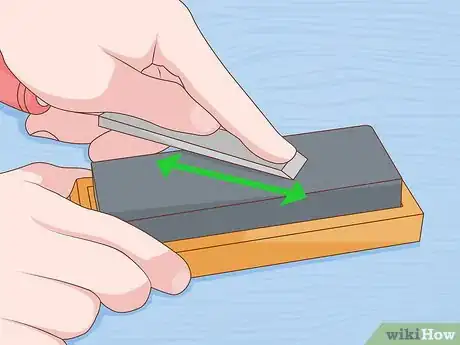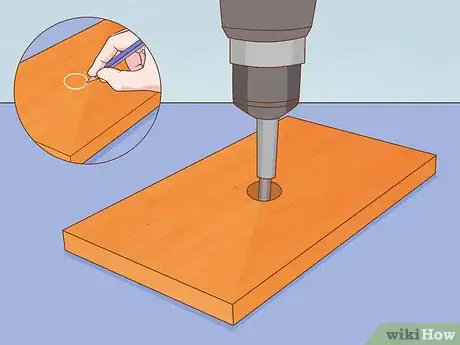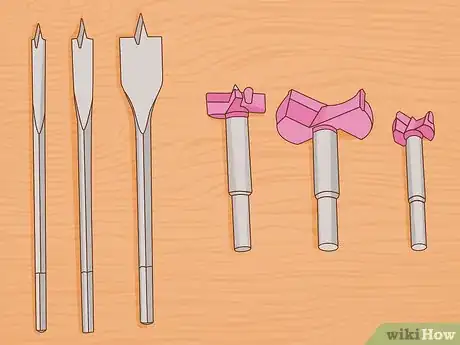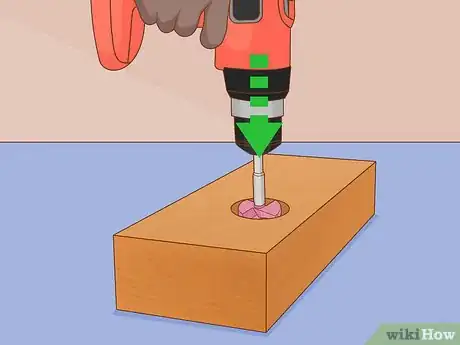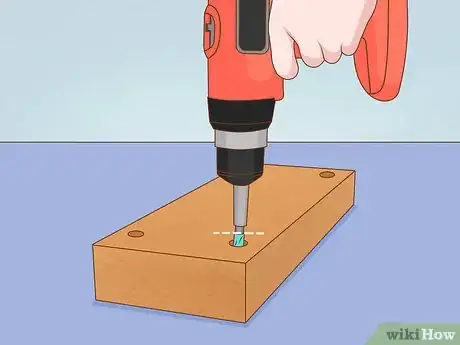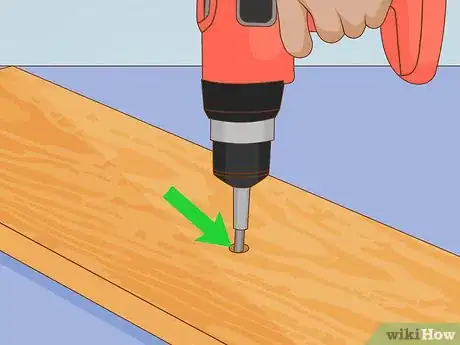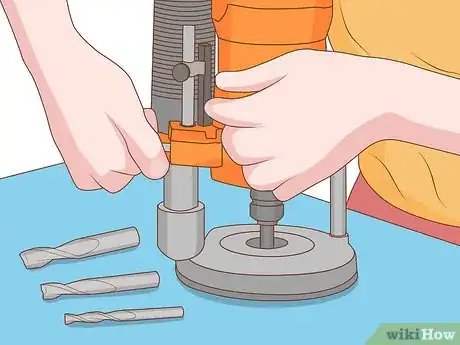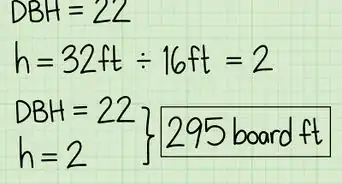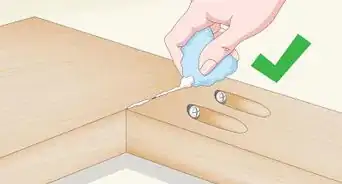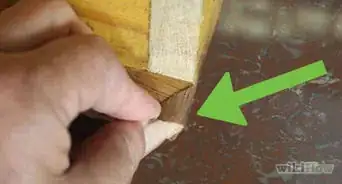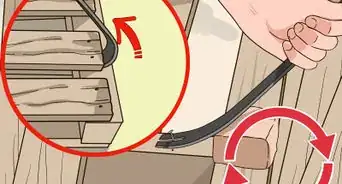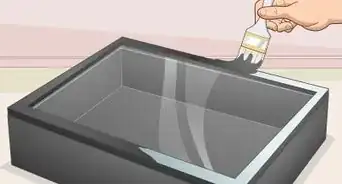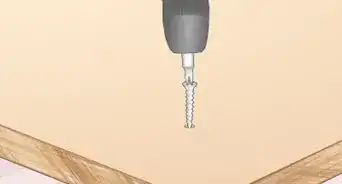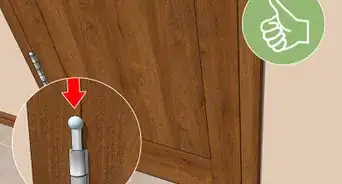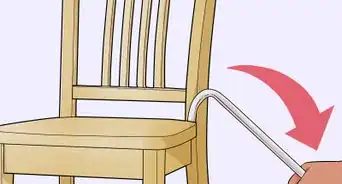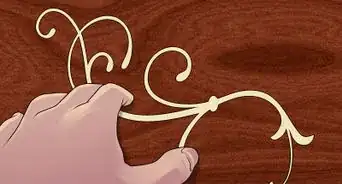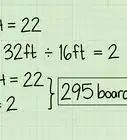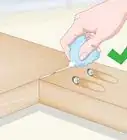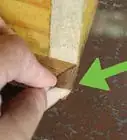This article was co-authored by wikiHow Staff. Our trained team of editors and researchers validate articles for accuracy and comprehensiveness. wikiHow's Content Management Team carefully monitors the work from our editorial staff to ensure that each article is backed by trusted research and meets our high quality standards.
There are 7 references cited in this article, which can be found at the bottom of the page.
This article has been viewed 64,018 times.
Learn more...
You might need to hollow out wood to improve an item's storage space, to make a part fit better, or to create a sneaky hiding place. Whatever your reason or need, one of the easiest ways to hollow out wood is with a woodworking mallet and chisel. You can make circular hollows in little time with a drill and a woodworking bit. Woodworking routers are quick and precise, but the initial cost of this tool can be quite high.
Steps
Using a Chisel
-
1Sharpen chisels before using them. Sharpening might not be necessary if you're only roughly hollowing out a piece of wood. However, a sharpened chisel will remove wood more cleanly as you hollow it out, resulting in a more polished finished product.[1]
- To sharpen a chisel, drag its end back and forth across a sharpening stone in a figure-eight shape that extends the entire length of the stone.
- To hone the beveled (angled) side of chisels, keep the bevel flush with the coarse side of the sharpening stone as you drag it back and forth.
- After honing the bevel, turn the bevel-side up, hold it flat to the fine side of the sharpening stone, and drag it back and forth same as the beveled side.[2]
-
2Secure the piece of wood. The force of you chiseling will likely cause the piece of wood to move. This can make it difficult to hollow out the wood precisely. Improve precision by holding the piece of wood in place with a vise or clamp to make chiseling easier on yourself.Advertisement
-
3Position the chisel at an angle to the piece of wood. The bevel (angled part) of the chisel should always face downwards at the wood. Place the tip of the end of the chisel against the wood and hold the handle at an angle.
- The steeper the angle you hold the chisel, the deeper it will cut into the wood. Control the depth by adjusting the angle the chisel forms with the wood.[3]
-
4Hit the chisel with a mallet to hollow out the wood. For better control, keep the angle of your chisel low to the wood so you only remove a little bit at a time. With your non-dominant hand, hold the chisel at about its middle. Tap the handle end of the chisel with a mallet to shave away wood.
- Many woodworking chisels are intended to be used with rubber woodworking mallets. Only use a metal hammer with heavy-duty chisels.[4]
- Sometimes, it's difficult to break through the surface of the wood. Give your chisel some help by etching a small groove into the wood with a utility knife.
- Generally, you should chisel in the same direction the grain of the wood flows. This will decrease cracking and unclean breaks.[5]
-
5Use a chopping cut to remove chunks of wood. Position the chisel close to the end of the piece of wood. Hold the chisel straight up-and-down with the wood so they form an L-shape. Hit the chisel firmly with a mallet until the chisel is about a half inch (1.3 cm) deep, then pop the chunk off the end.
- Splinters and wood shavings are sometimes sent flying by chopping cuts. Always wear safety glasses when using this technique.
- The chopping cut works best at the ends of pieces of wood. Using this cut in the center of a solid piece will likely make it crack.
- A blunt chisel won't work well for this technique. Only use a well-sharpened chisel when performing a chopping cut.[6]
-
6Outline the hollow with grooves for improved precision. Set a circular saw to the desired depth for your hollowed area. Use the saw to cut grooves outlining the hollowed area on the wood. Hold your chisel at an angle and hollow out the outlined area by tapping the handle to shave away the wood.[7]
Boring a Hollow with a Drill
-
1Mark your placement and drill a guide hole. This technique is only useful for making circular shaped hollows. Mark the position of your hollow on the wood with a pencil. At this point, use a normal drill bit to drill a shallow hole into the wood.[8]
- Your guide hole only needs to break the surface of the wood to work effectively. Keep guide holes as shallow as possible.
- With softer or unfinished woods, you may not need a guide hole. However, these take little time to drill and will decrease the chances of chipping and cracking.
-
2Select the bit to make your hollow. Spade bits come in different sizes, allowing you a pretty wide range for your hollow. Flat bottomed, precise hollows can be made with a Forstner bit. Larger hollows will be made most easily with a hole saw.[9]
- You'll have to use your best judgement to choose the bit right for your hollowing project. Choose your bit according to your project's needs.
-
3Use a woodworking bit to drill the hollow. Switch out your normal drill bit for the one you chose to make your hollow. Position the bit at the guide hole so the bit forms an L-shape with the wood. Apply moderate pressure to the drill and press its trigger to bore a circular hole in the wood.[10]
- Drilling in this fashion can kick up sawdust. Wear safety googles when using your drill, and consider using a breathing mask if you have sensitive lungs.[11]
- You won't be able to gauge the depth of this technique very accurately. Keep a careful eye on the depth of the bit as you drill.
- To make it easier to determine depth, hold the drill to the side of the wood at your chosen depth. Use a piece of tape to mark the bit. When the tape reaches the wood, you've reached the right depth.
-
4Drill multiple holes for quicker chiseling. When hollowing out large areas, use a normal drill bit to drill several holes through the area you'll be hollowing. These holes will make chiseling much easier and more precise, but it can be difficult to maintain even depth with this method.
- This is another time where you can use a piece of tape to improve depth consistency; mark the desired depth of your hollow on your drill bit with the tape.
Making a Hollow with a Plunge Router
-
1Make a width guide. Woodworking routers use a width guide to control the area being hollowed out. Some routers may come with adjustable attachments for setting the dimensions for the hollow, but if yours doesn't, make your own by sawing the shape of your hollow into a piece of plywood.
-
2Fasten the guide to the wood you'll be hollowing. To prevent the wood and guide from dangerously coming loose, use several clamps to firmly hold the two pieces together. If your guide moves even a little bit, the placement of your hollow will be thrown off.[12]
-
3Select a bit and set its depth. Spiral bits tend to make the cleanest cuts, but depending on the kind of hollow you're making, a different shaped bit might be more suitable. Set the depth of the bit to the depth of your hollow and you're ready to use the router.
- Avoid setting the depth of your bit so it's longer than the thickness of the wood. Doing so could result in you cutting all the way through to the other side.
-
4Hollow out the wood with the router. Use the handles and trigger on the router to lower the bit into the wood until it reaches its max depth. Reverse this process to remove the bit, then reposition the wood and lower the bit to repeat the process again. Continue in this fashion until the hollow is done.[13]
- Routers can kick up quite a bit of sawdust. Because of this, you should always wear safety glasses when operating your router.
- Different brands of router may use a different procedure for operation. Always follow the router's direction for the best and safest results. Digital manuals can usually be found online.
- With larger hollows, sometimes it's quicker to make several holes around the perimeter and through the center with a router and then chisel out large chunks.
Warnings
- Failing to use tools properly, especially electrical tools like a drill, saw, or router, can result in personal injury or property damage.⧼thumbs_response⧽
Things You'll Need
Using a Chisel
- Rubber or plastic woodworking mallet
- Wood chisel
- Safety glasses
- Circular saw (optional)
- Sharpening stone (optional; recommended)
- Clamps (or vise)
Boring a Hollow with a Drill
- Breathing mask (optional)
- Electric drill (with normal drill bits and woodworking bits)
- Pencil
- Safety glasses
Making a Hollow with a Wood Router
- Clamps (several)
- Plywood (for making the hollow guide)
- Safety glasses
- Saw
- Woodworking router (and bits)
References
- ↑ https://www.familyhandyman.com/tools/woodworking-tools/how-to-use-a-wood-chisel/view-all
- ↑ https://www.bobvila.com/articles/1005-sharpening-chisels/#.WXkV6NQrLIV
- ↑ https://www.familyhandyman.com/tools/woodworking-tools/how-to-use-a-wood-chisel/view-all
- ↑ https://www.ccohs.ca/oshanswers/safety_haz/hand_tools/chisels.html
- ↑ https://www.familyhandyman.com/tools/woodworking-tools/how-to-use-a-wood-chisel/view-all
- ↑ https://www.familyhandyman.com/tools/woodworking-tools/how-to-use-a-wood-chisel/view-all
- ↑ https://www.familyhandyman.com/tools/woodworking-tools/how-to-use-a-wood-chisel/view-all
- ↑ http://www.visionaware.org/info/everyday-living/home-repairs/gils-guide-to-woodworking/drilling-holes/1235
- ↑ https://www.bobvila.com/articles/480-drill-bits-for-different-jobs/#.WXacHogrLIU
- ↑ http://www.planitdiy.com/how-to/garage-workshop/how-to-drill-holes/
- ↑ http://www.visionaware.org/info/everyday-living/home-repairs/gils-guide-to-woodworking/drilling-holes/1235
- ↑ https://www.familyhandyman.com/tools/routers/router-basics/view-all
- ↑ https://www.familyhandyman.com/tools/routers/router-basics/view-all
